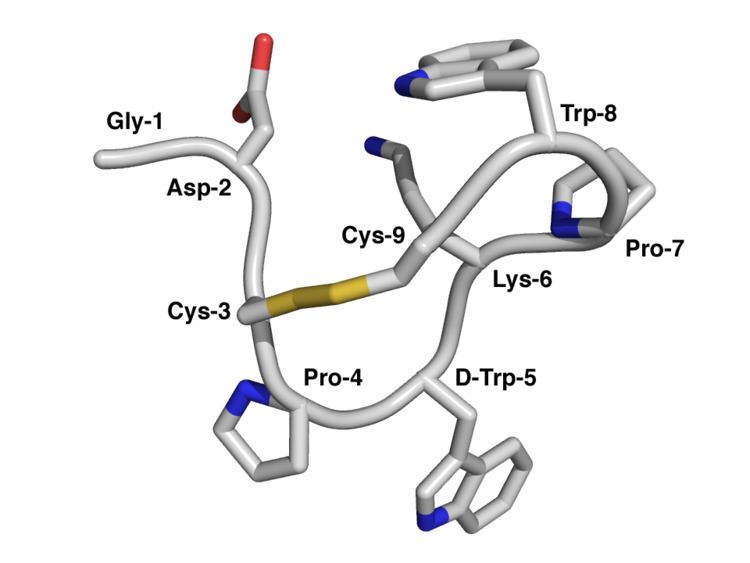Symbol Contryphan_CS InterPro IPR011062 SCOP 2cco | Pfam PF02950 PROSITE PS60027 SUPERFAMILY 2cco | |
 | ||
The contryphans (conus + tryptophan) are a family of peptides that are active constituents of the potent venom produced by cone snail (genus conus). The two amino acid cysteine residues in contryphans are linked by a disulfide bond. In addition, contryphans undergo an unusual degree of post-translational modification including epimerization of leucine and tryptophan, tryptophan bromination, amidation of the C-terminus, and proline hydroxylation.
Contents
Family members
Contryphan family members include:
where the sequence abbreviations stand for:
and the remainder of the letters refer to the standard one letter abbreviations for amino acids.
Mechanism of toxicity
The venom of cone snails cause paralysis of their fish prey. The molecular target has not been determined for all contryphan peptides, however it is known that contryphan-Vn is a Ca2+-dependent K+ channel modulator, while glacontryphan-M is a L-type calcium channel blocker.
